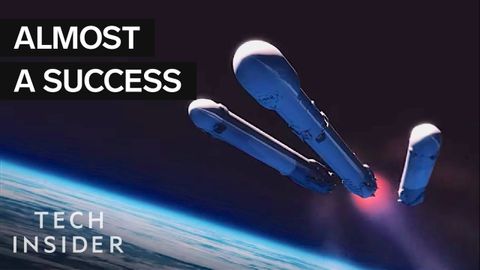觀看SpaceX的 "史上最難發射"。 (Watch SpaceX’s ‘Most Difficult Launch Ever’)
Liang Chen 發佈於 2021 年 01 月 14 日  沒有此條件下的單字
沒有此條件下的單字US /ˈmʌltəpəl/
・
UK /ˈmʌltɪpl/
- adj.多重的;多種的;多發性的;多重的
- n. (c.)多;多個的;乘數
- pron.多重的
US /ˈslaɪtli/
・
UK /ˈslaɪtli/
US /spəˈsɪfɪkli/
・
UK /spəˈsɪfɪkli/
US /fɔrs, fors/
・
UK /fɔ:s/
- n.軍隊;力;強迫;武力;影響力;力量;警力
- v.t.被迫;強行打開;催生

